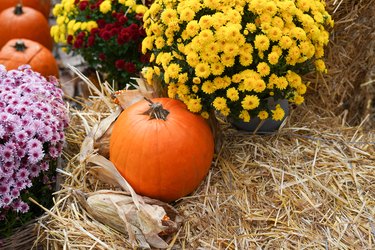
As summer slides into autumn, you may be counting down the handful of tomatoes remaining on the vine in your garden and feeling wistful. But no need to dive too deep into nostalgia — it's the perfect time to start planting a fall garden. September may not be as warm as August, but the cool-season veggies you'll be planting grow best in cooler weather. And if you'd like to bring more perennials into the flower garden, this is the ideal time to do so.
Read on for a short list of top veggies to plant now, as well as six great perennials to add to the beauty of your landscape.
Video of the Day
Video of the Day
When to Plant a Fall Garden
Yes, you know that April showers bring May flowers, but there are innumerable benefits to planting in the cool weather of autumn.
First, on the topic of showers, moving into fall generally offers more rainfall than moving out of spring does. And that means less irrigation will be required. In addition, all those things that make the garden so much work in spring — from insect pests to weeds to diseases — there are fewer in fall than in spring and summer. Plus, the cool weather is ideal for cool-season crops, and many taste sweeter after a light frost.
Your garden possibilities for fall depend on where you call home. If you reside in warmer USDA plant hardiness zones, your options are many, including warm-season crops like tomatoes. For those in areas with cooler winters, you'll have to be a little more selective. These lists of veggies and perennials are a perfect starting point.
Perennials to Plant in Fall
1) Russian Sage (Perovskia atriplicifolia)
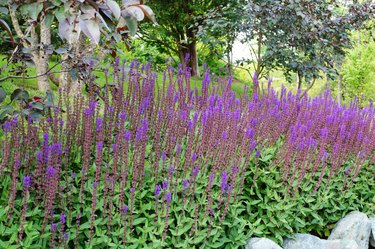
This bushy shrub makes a real statement in any landscape. Growing to 6 feet tall, it offers aromatic gray-green leaves on upright stalks topped with panicles of blue-lilac flowers from summer through fall. Grown in a full-sun location in well-draining soil, this deciduous perennial tolerates heat and drought. It also survives winter weather down to USDA zone 4.
2) Lemon Queen Sunflower (Helianthus ‘Lemon Queen’)
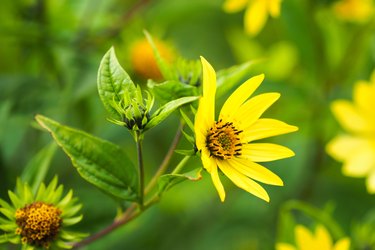
Who can resist a sunflower? And 'Lemon Queen' is a stately beauty. The stalks grow to 6 feet tall and are topped with large, yellow flowers from summer through fall that turn to face the sun. This plant provides nectar for pollinators — including hummingbirds and butterflies — as well as cut flowers for vases. Placed in a sunny location toward the rear of a bed, it's a stunning backdrop for other fall flowers. Hardy down to USDA zone 4.
3) Coral Bells (Heuchera americana)
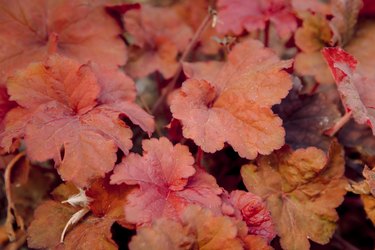
Ready for different colors and shorter plants? Need a plant for a shady garden bed? Look to coral bells for incredible leaf shades, ranging from nearly black to silver, pink, orange, and chartreuse. In spring, the colorful foliage is joined by flowers. These plants only grow to one foot tall and 18 inches wide. They thrive in partial shade in rich, well-draining soil in USDA zones 5 to 9.
4) Black-Eyed Susan (Rudbeckia hirta)

Black-eyed Susan is one of the best-known perennials around and one of the most popular. That's because this native is easy to plant and care for. Hardy to USDA zone 4, these beauties offer brilliant yellow flowers with dark centers on 3-foot stems. Blooms start in summer and continue through autumn. The plant will spread to a few feet wide in a full sun location and well-drained soil.
5) Spring Bulbs
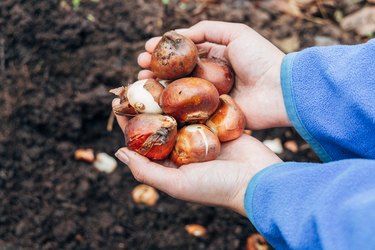
It's one of the (many) ironies of gardening: spring flowers grow from fall bulbs. If you want tulips, daffodils, grape hyacinth, iris, hellebore, allium, snowdrop or crocus in your spring garden, you need to get those bulbs in the ground in autumn. I am using the term "fall bulbs" loosely here, since some of these flowers grow from true bulbs, but others grow from rhizomes and others from corms.
Why is it necessary to plant spring-flowering bulbs in the cool of autumn? These flowers are dormant perennials, requiring cool soil and moisture to break dormancy. It is in autumn that they wake up and start growing roots to burst out in flower in spring.
Vegetable to Plant in Fall
If you want to add a little color and flavor to your autumn table, try planting a fall vegetable garden. While most gardeners plant crops in spring and summer, many vegetables can still grow in the fall. Some spring and summer crops even grow better in the fall thanks to the cool weather as they mature.
Gardeners in hardiness zones eight and up can get all sorts of vegetable plants started, including tender tomatoes and eggplant. Green thumbs in northern climates will find success growing vegetables that enjoy the cooler, shorter fall days, like leafy greens, root vegetables, cabbage, broccoli, and kale.
Bok Choy
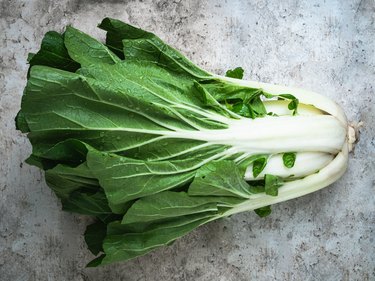
It doesn't matter where you live (unless it's the Arctic) — you'll be able to grow bok choy, also called pok choy, in your fall veggie garden. Choose one of the baby varieties, since they are ready to eat in just over a month. They are particularly vulnerable to summer insect damage and they grow better and faster as cooler weather reduces or eliminates the insect population. Plant in a location with sun in any hardiness zone (USDA 2 to 11) about a month before the first frost date.
Cabbage (Brassica oleracea)
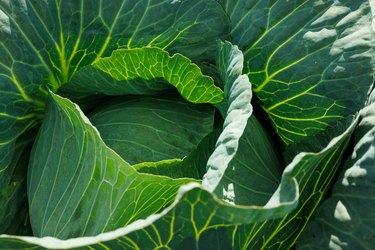
Do you like your cabbage in heads rather than leaves? Then sow those cabbage seeds in the autumn garden. In cooler weather, they form heads in around 90 days. Select a type that is cold-hardy if you want to continue harvesting into winter. The cabbages don't grow any bigger after a frost, but they stay fresh and the taste becomes sweeter. They are best grown in a site with good drainage and full sun in USDA zones 1 to 9.
Radishes (Raphanus sativus)
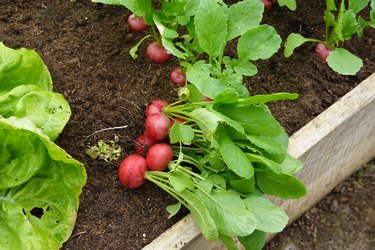
Radishes are another crop that can be planted in fall in every hardiness zone in the continental United States. The autumn weather keeps the soil cool and moist, which means fast growth for these veggies. If you've heard that radishes have issues in the spring garden, such as a dry texture or bitter taste, that won't happen in fall. Don't plant winter varieties unless you install them early, in mid-summer. Regular radishes are ready for harvest about a month after planting, so sow those seeds in a sunny site four weeks before the estimated first frost date.
Arugula (Eruca versicaria)
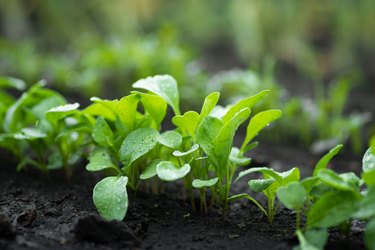
Anyone in USDA hardiness zones 2 to 11 can grow the peppery leafy green, arugula, in fall. It is called roquette in France and, added to the salad, provides a spicy kick. Plant in a site that gets at least 6 hours of sun per day. Arugula matures in about 40 days. If you are running short of time, you can save a few days by soaking the seeds overnight before planting.
Potatoes (Solanum tuberosum)
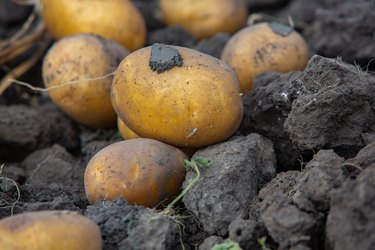
Potatoes are as easy as fall crops get. You plant a seed potato in a full-sun location, mulch with straw as the vines appear, then dig up the tubers two months later as the leaves die back. If you pick your variety carefully, you can plant in early September, then harvest before November frosts. 'Yukon Gold' is a good choice.
Keep in mind that potatoes are a little picky — they don't grow happily in hot soil, and they can't withstand heavy frost. Be sure to choose seed potatoes that are best for fall crops. Most people plant potatoes in the spring, and the seed potatoes you're looking for may be hard to find in fall, so stock up whenever you find them.
Kale (Brassica oleracea var. acephala)
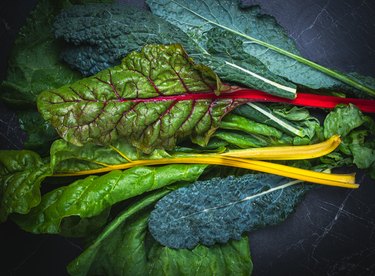
Kale is a classic cool-season crop that grows best when temperatures are cooler. It's possible to plant this cole crop all growing season, but fall-planted kale is the tastiest. That's because the flavor of the leaves deepen and sweeten after a light frost. What else is great about it? It absolutely thrives on neglect.
Plant kale in USDA zones 7 to 9 in a site with sun and well-drained soil. If you are seeding, sow between six and eight weeks before the frost date. If you are buying transplants, you can plant them a few weeks later. Harvest leaf by leaf as you are ready to eat this veggie in late autumn.